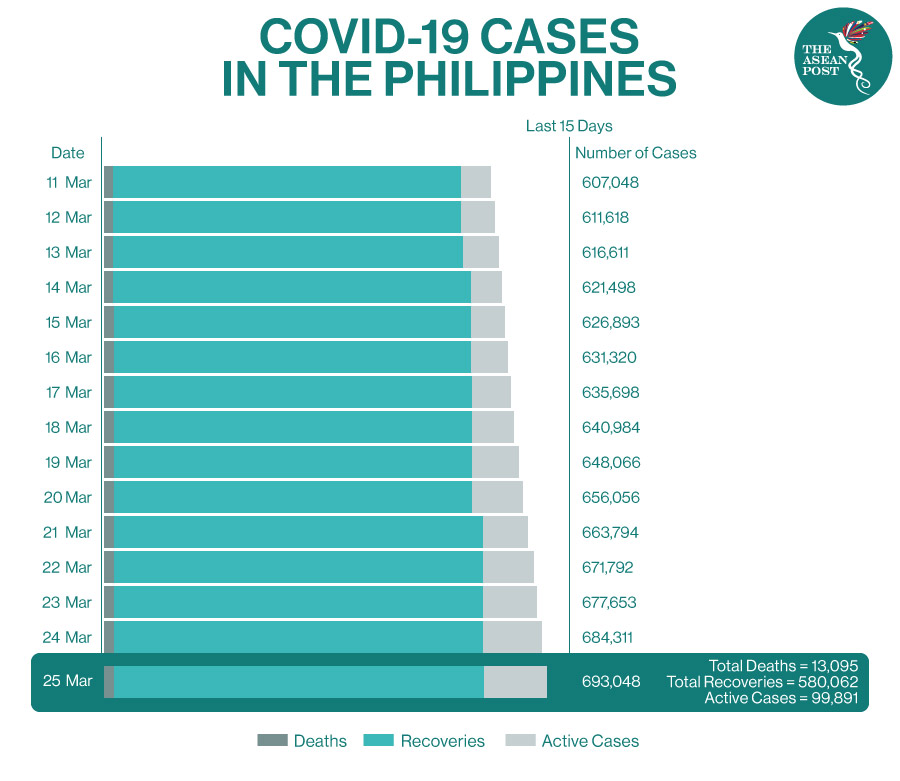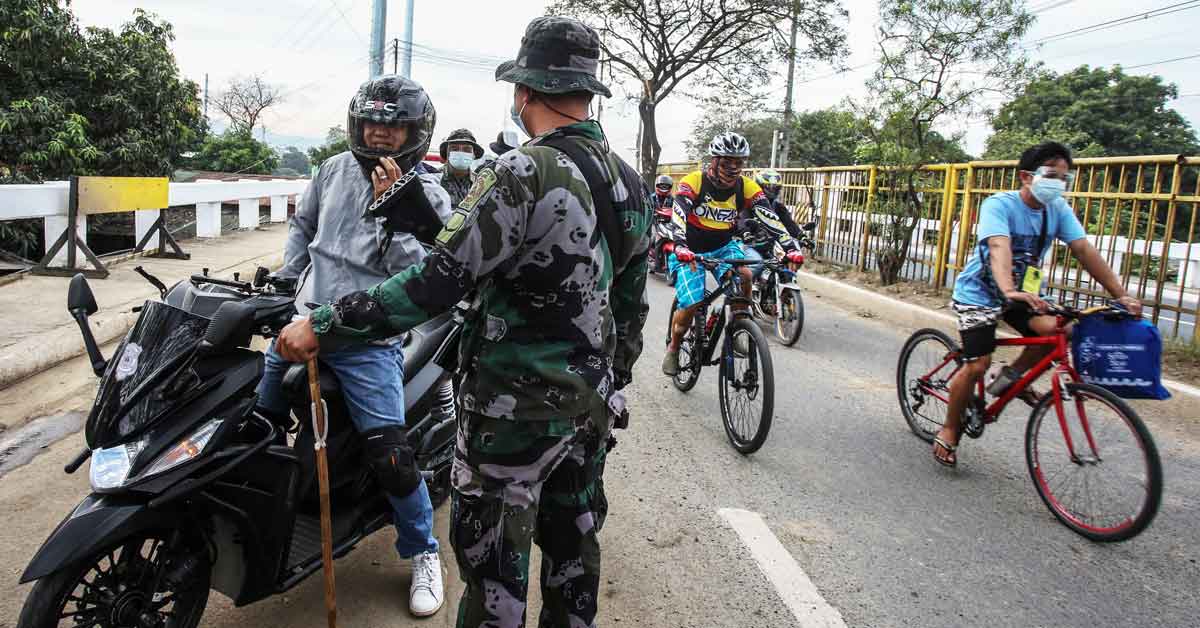It’s hard to tell whether the Philippine government intentionally sought to mark exactly one year since the 2020 Metro Manila COVID-19 lockdown by tightening quarantine restrictions once again, first on 15 March, and then further on 22 March.
New COVID-19 cases have been piling up at an alarming rate recently, with the capital as the epicentre, home to roughly a tenth of the national population.
City mayors, with the backing of the administration, resolved to impose stricter checkpoints, a 10:00 pm curfew, and a limit to general public mobility and economic operations.
What little difference a year makes as an end to one of the longest lockdown periods in the world becomes that much more unimaginable.
The latest move has been prompted by the abrupt increase in daily average cases (more than 4,600), the second-highest in Southeast Asia. The numbers are comparable to the height of transmission last year and shows a 113 percent hike from the end of February to the present.
On 18 March, the Philippines recorded its highest-ever number of confirmed infections in a day, at 7,103, breaching the 70,000-mark of active cases, the highest since August last year.
Two days later, the record was broken once more, as cases in a single day reached 7,999. More than 12,000 deaths have also been reported.
While Indonesia, the country with the most COVID-19 cases in the region, has steadily curbed infections, infections in the Philippines is on the uptick.

An ‘Excellent’ Response
Earlier this month, Harry Roque, presidential spokesperson touted the “excellent” response of the Philippine government to the public health crisis, compared to developed nations with more modern medical facilities. He also likened the shared experience of the past year to a “vacation”.
Meanwhile, President Rodrigo Duterte attempted to downplay the return of stricter quarantine impositions, saying it is only a “small matter”.
The reality of having spent a year supposedly controlling the disease yet having to resort to the same hastily imposed restrictions speaks volumes. How can the response be “excellent” if the capital is seemingly going back to square one?
Testing for COVID-19 remains an inaccessible privilege for the majority of Filipinos. The vast majority of dedicated vaccination facilities remain run by private enterprises.
Duterte himself publicly stated only in November that he had just realised that affordable and accessible testing was important. Civil society groups have been calling for free mass testing since the beginning.
Despite the president’s epiphany and the collective groans of a nation, public services only offer COVID-19 tests for those with symptoms. In private establishments, the cheapest reliable tests are priced at about US$52, equivalent to a fifth of the minimum wage earner’s salary in the capital.
Public officials have also only just begun developing a national system for contact tracing this month. Throughout the past year, local governments have been left to their own devices and resources to address this challenge, resulting in various discrepancies in methods and outcomes.
Vaccine rollout remains snail-paced. Nearly three weeks after acquiring vaccines, 90 percent of them have been distributed, according to the Department of Health (DOH), but less than half of the entire medical workforce has been inoculated.
The DOH assures that inoculations will rise once donated supplies arrive. But it all seems like a scramble for supplies, rather than a definitive plan.
Fundamentals Still Unaddressed
It’s no wonder that the capital and possibly the country are facing another lockdown, eerily marking the constraints put in place last year. Chronic mismanagement has left the fundamentals of the public health crisis sorely unaddressed.
After a year, you might think a lockdown would be a last resort, an act of desperation – not something done because nothing else had been worked out.
Worse, the return of restrictions looks to carry the same pitfalls it did the first time around. Throughout last year, more than 100,000 individuals were arrested for low-level quarantine violations. Police averaged around a thousand arrests per day nationwide.
Just two days after curfew was reinstated, however, police arrested 6,498 people in Metro Manila alone.
The Duterte administration is doing the same thing as last time, while leaving out what it should be doing, but somehow expects a different result.
The timing is also suspect. Tensions are high, as is the demand for political accountability –reintroducing quarantine policies immobilises the opposition, elevates police power above all and presents the appearance that something is being done.
It seems Duterte is unfazed by the international pressures of seeing neighbouring countries far surpass his regime’s efforts in addressing the pandemic. The virus cannot be put in handcuffs, and it will outsmart indolent officials at every turn.
As long as these practices remain the standard, the Philippines will have to grapple with its own government’s failures before it can truly make strides for public health. – CNA
Related Articles:
